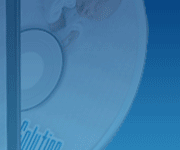I have given birth three times. Each time I had a healthy baby girl that weighed between 7.5 and 8.1 lbs, but the labors were all different! The first two time I used the "Lamaze Method" of breathing and childbirth where the breathing is different depending on what phase of labor the woman is in. With my third daughter I used the Bradley Method, which I had learned about at La Leche League meetings in Louisville, KY. I could not believe how easy and effective it was. Simply beginning the slow, steady, rhythmic breathing at the beginning of each contraction got me through each contraction without feeling that I was losing control or being swept away with pain. I was hooked up to a monitor for the last 6-8 hours so once the contractions were coming regularly, my husband would wake me up and start breathing with me and I just did what he did! Things were going so well that at one point my OB asked if I would be willing to allow some residents to come in and observe me. I was happy to do that, but strangely, when I begin talking with them, my labor came to a complete stop for a brief period so I had to bid them good-bye.
I highly recommend the technique though and feel that it is the easiest and the most effective!
What is the Bradley Method?
Dr. Robert Bradley developed this method in the late 1940s. This Bradley method emphasizes an extremely natural approach, with few or no drugs and little medical help during labor and delivery. Almost 90 percent of women who use this method are able to deliver their babies without medication. Stressing good diet and exercise during pregnancy, it teaches deep relaxation techniques to manage pain, and educates a woman's husband or partner so they can be an effective coach.
Some parents find the method empowering. For other parents, the method may not be right.(See Even though the courses aim to teach you how to avoid unnecessary pain, some women prefer to have pain medication as an option. But many are attracted by the idea of giving birth to a baby who is unexposed to drugs, and consider the Bradley method for that reason.
What to expect in a Bradley course?
Typically eight to twelve weeks long, it is taught by certified teachers. To make sure the classes are comprehensive and also personal, no more than eight couples as a rule make up a session. You will spend alot of time practicing coaching techniques (often included are videos you and your partner can take home). You will also learn during these courses:
• Natural childbirth
• Active participation by the husband as coach
• Excellent nutrition (the foundation of a healthy pregnancy and baby)
• Avoidance of drugs during pregnancy, birth, and breastfeeding, unless absolutely necessary
• Training: "Early Bird" classes followed by weekly classes starting in the 5th month and continuing until the birth
• Relaxation and NATURAL breathing
• "Tuning-in" to your own body and trusting the natural process
• Immediate and continuous contact with your new baby
• Breastfeeding, beginning at birth provides immunities and nutrition
• Consumerism and positive communications
• Parents taking responsibility for the safety of the birth place, procedures, attendants, and emergency back-up
• Parents being prepared for unexpected situations such as emergency childbirth and cesarean section
Copyright © Angelia Fenton. Permission to republish granted to Pregnancy.org, LLC.
 Someone very near and dear to me gave birth last Friday! We had talked about her using the headphones and she wasn't sure she wanted to, but when she found out that women who have C-sections don't have their own private room, she changed her mind. It seems that there was at least one very loud woman just a few feet away on the phone with her husband and this woman was not a bit happy with him. My patients wasn't feeling that great and decided to put on the headphones to block out all the hostile vibes around her and said it absolutely did the trick!
Someone very near and dear to me gave birth last Friday! We had talked about her using the headphones and she wasn't sure she wanted to, but when she found out that women who have C-sections don't have their own private room, she changed her mind. It seems that there was at least one very loud woman just a few feet away on the phone with her husband and this woman was not a bit happy with him. My patients wasn't feeling that great and decided to put on the headphones to block out all the hostile vibes around her and said it absolutely did the trick! 





